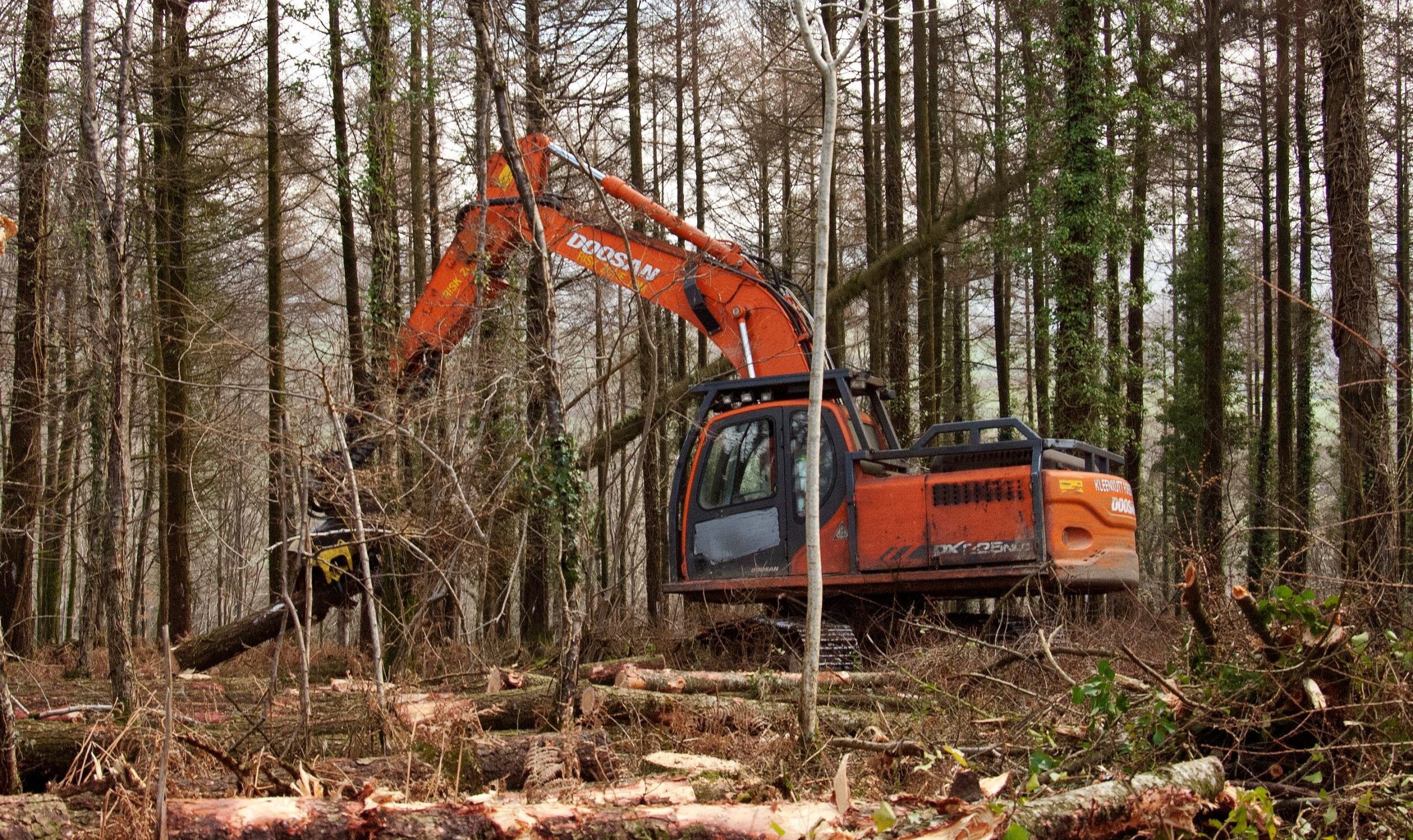A felling licence from the country forestry authority is required to fell trees in the United Kingdom, and it is an offence to fell trees without a licence if an exemption does not apply.

Larch trees are particularly susceptible to ramorum disease, caused by Phytophthora ramorum infection, and infected larch trees can produce large quantities of the spores which spread the disease. Moist air currents can spread these spores several miles from tall trees, increasing the risk to other susceptible plants in the area.
Extra precautions are therefore needed when felling larch trees (pictured) which have or might have ramorum disease, to minimise the risk of spreading the disease during felling and removal operations. Some of these precautions take the form of variations to the usual felling licence application and approval procedure in some parts of the UK when larch trees are among those to be felled. It is therefore important that forest managers planning to fell larch find out whether any variations apply to them.
The felling licence regulations and procedures for each country, including any variations, are presented on the forestry authorities' websites:
Whether and how a variation is applied can depend on which P. ramorum risk zone the trees to be felled are in. A map of the risk zones is available on our main ramorum disease tools and resources page.
Although written for the internal guidance of the forestry authorities' plant health inspectors, we have published this guidance to help woodland managers whose trees have or might have ramorum disease (or other pests and diseases) to understand what to expect from the authorities' staff and procedures.